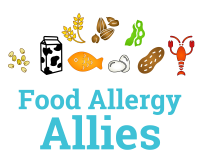What is a food intolerance?
A food intolerance, often called a food sensitivity, occurs when a person has difficulty digesting certain foods. Food intolerances, which are related to the digestive system, are not the same as food allergies, which are related to the immune system.
What causes a food intolerance?
Different food intolerances are caused in different ways. Some food intolerances are caused when a person’s body does not produce a certain enzyme (enzymes are special substances that work to help break down other substances or to change one substance into a different substance). For example, if someone is lactose intolerant, their body does not produce the enzyme lactase that is usually in charge of breaking down lactose. Because the lactase enzyme is not present, a person with a lactose intolerance is unable to digest lactose, and therefore experiences stomach pain and other symptoms when they do happen to eat food containing lactose. However, missing digestive enzymes are not the only cause of food intolerances. Other types of food intolerances may be caused by sensitivities to certain chemicals compounds. For example, salicylate is a compound that can be found in artificial flavorings, preservatives, and also plants. People who have a salicylate intolerance have a lower threshold for tolerating salicylate than regular people.
What are some examples of food intolerances?
- Lactose intolerance
- Lactose refers to the sugar found in milk
- An intolerance to lactose results when the body does not produce the enzyme lactase, and can therefore no longer digest lactose
- Fructose intolerance
- Fructose is a sugar found in certain fruits, vegetables, and honey
- An intolerance to fructose can occur due to hereditary fructose intolerance (the body is missing the enzyme to break down lactose) or due to fructose malabsorption (the body is missing a protein that allows the body to absorb the sugar in the intestine). In both cases, the body is unable to break down fructose property, leading to symptoms
- Gluten intolerance
- Gluten is a protein that is found in many grains, such as wheat, barley, farro, couscous, spelt, and rye
- Gluten intolerances (also known as nonceliac gluten sensitivity) are often confused with wheat allergies and celiac disease, but all three are different conditions
- Salicylate intolerance
- Salicylate is a compound that can be found in many plants, and also in artificial additives
- A Salicylate intolerance occurs when the body is more sensitive to the compound than average
- FODMAPs intolerance
- FODMAP is an acronym that stands for “fermentable oligo-, di-, mono-saccharides and polyols”
- Essentially, a FODMAP is a certain type of carbohydrate that is difficult to digest
- A FODMAP intolerance occurs when the body has more difficulty than average breaking down and digesting carbs that fall into the FODMAP category
- And many, many more!
How common are food intolerances?
Food intolerances are pretty common. It is estimated that up to 20% of the world’s population may have a food intolerance. The statistics for food intolerances are not certain however, because food intolerances are over misdiagnosed or overlooked. 85 million Americans are impacted by food intolerances and allergies combined.
What are the symptoms of a food intolerance?
Symptoms of food intolerances are notoriously broad and difficult to identify, making it hard to correctly diagnose a food intolerance. That being said, many food intolerances cause gastrointestinal symptoms, such as stomach pain, gas, bloating, vomiting, gut inflammation, and diarrhea. Other symptoms include headaches, anxiety, hives and itching, insomnia, rapid heartbeat, fatigue, and join pain.
Are food intolerances treatable?
There is currently no cure for a food intolerance. However, the symptoms of a food intolerance can be minimized by avoiding trigger foods. For certain intolerances, such as lactose intolerance, a supplement can be taken to aid digestion, allowing the person to freely eat without worry.
Article sources:
https://www.healthline.com/nutrition/common-food-intolerances#TOC_TITLE_HDR_4
https://www.medicalnewstoday.com/articles/319704
https://www.medicalnewstoday.com/articles/263965#intolerance-vs-allergy
https://www.medicinenet.com/what_are_the_most_common_food_intolerances/article.htm

